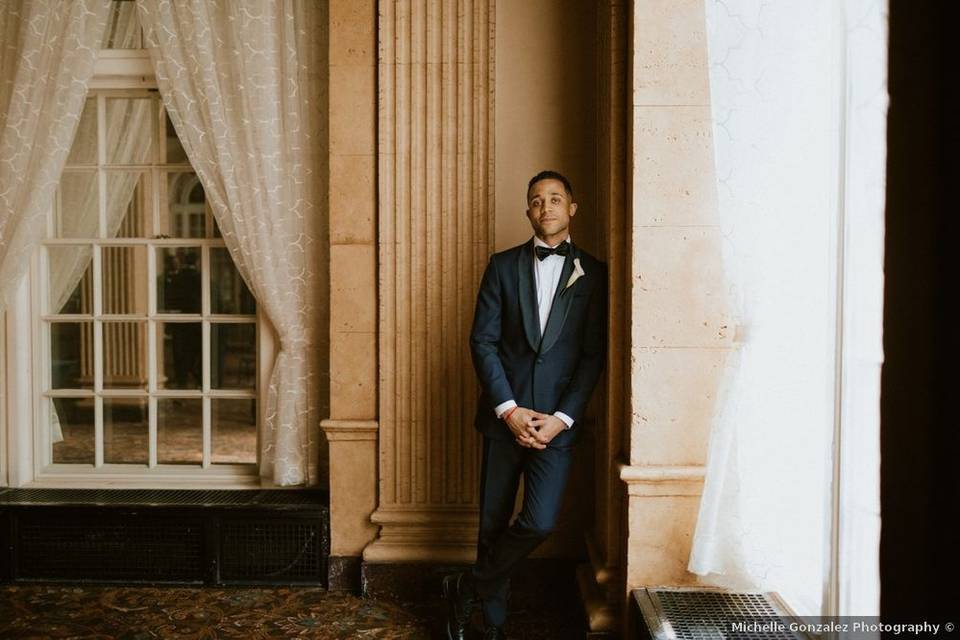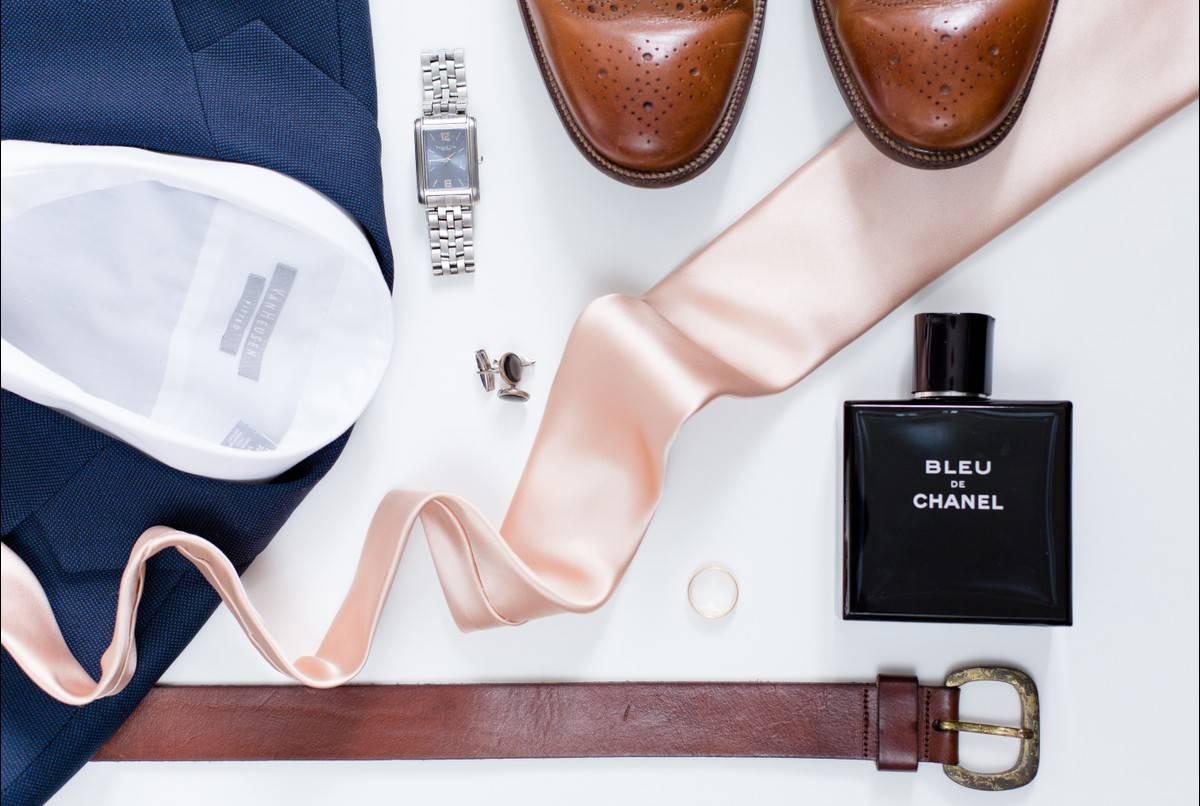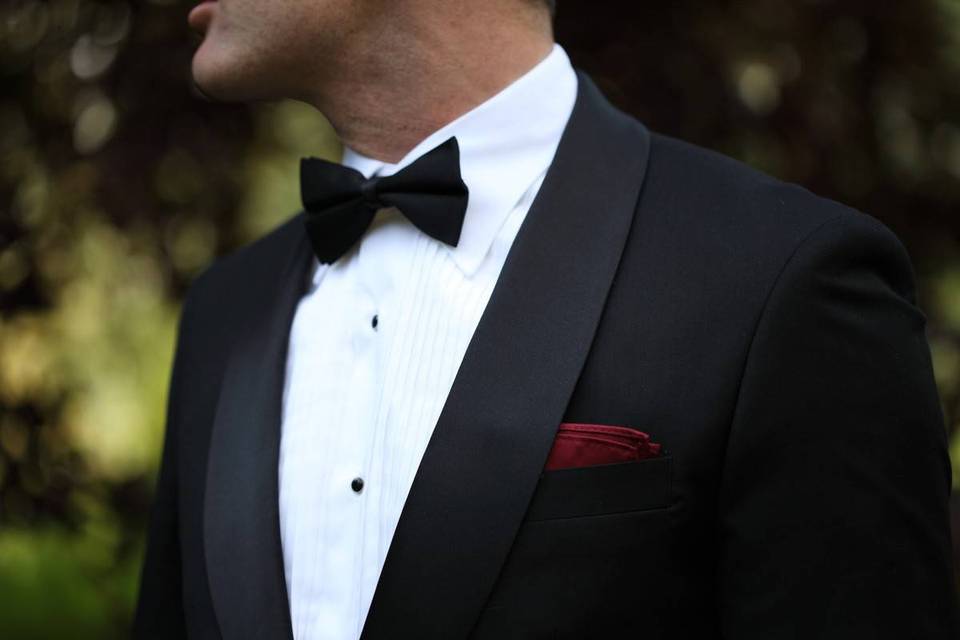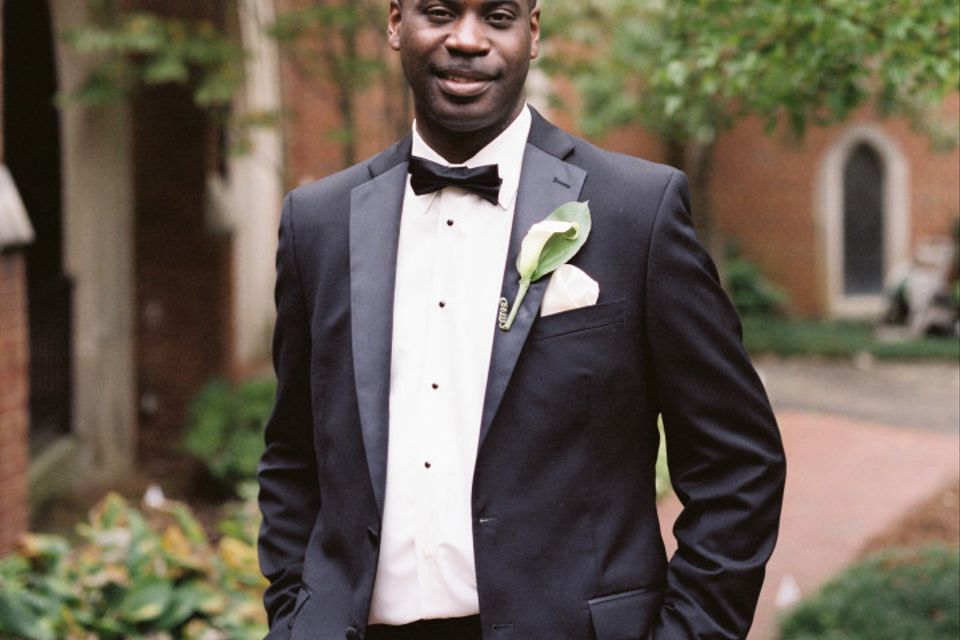What’s the Difference Between a Tuxedo and a Suit?
Want to know the difference between a tux and a suit? Read on to find out exactly what you need to know about when, where, and why you wear each.

If you’re about to get married and you’ve found yourself pondering the difference between a tuxedo vs. a suit, you’re not alone. Most events today are far less formal—and their dress codes far less rigid—than years ago, so many don’t learn the difference between the two until they’re preparing for their wedding day. It’s worth noting that a tuxedo is technically a suit, but a tux is much more formal and should only be worn after 5pm. Intrigued?
Here’s everything you need to know about the great tuxedo vs. suit debate, the differences between the two, and when it’s appropriate to wear each.

Tuxedo vs. Suit: What’s the Difference?
Presence of satin
The main difference between a tux and a suit is the presence of satin. In short, a tuxedo has it—a suit does not. On a tux, there may be satin on the lapel facing, buttons, pocket trim and down the side of the trousers. There will be no satin on a suit—in fact the whole suit, including pants, jacket and accessories, will be made from the same material—and buttons will be either plastic or covered with the same fabric as the jacket.
Different occasions
Tuxedos are, of course, more formal than suits. You wouldn’t wear a tux to work, but you could wear a suit to almost any office and not look out of place. Tuxedos are also considered evening attire (unless you wear a morning suit, but that’s a different story) and should not be worn during the daytime, whereas suits can be worn at almost any time of the day. To sum up: If you’re having a formal or black-tie wedding, wear a tux!
Suits can also be made from a variety of fabrics, including linen and cotton for warmer weather, and can be any color. Tuxedos, on the other hand, are traditionally black or midnight blue.
Different jacket and pocket styles
As mentioned above, a tuxedo jacket will include satin features, while a suit jacket will not. A tuxedo jacket may also have a shawl collar, peaked lapel or notched lapel, whereas a suit jacket is unlikely to ever have a shawl collar.
The pockets on tuxedo and suit jackets differ, too: On a suit, they can have a flap or not, whereas tuxedo jacket pockets must have satin trim instead of a flap as that creates a more seamless look.
Different ties, accessories and underpinnings
Traditionally, a tuxedo is worn with a bow tie and cummerbund or waistcoat, while a suit is worn with a long necktie and sometimes a vest. You can wear a vest and long tie with a tux, but that’s considered more offbeat. With a suit, you could easily wear a bow tie or go without a waist-covering and no one would bat an eyelash.
In terms of accessories, a tuxedo should be worn with a white pocket square, while a suit can be worn with a pocket square made from any complementary fabric.
Different shoes
Suits can be worn with almost any type of shoes. Really! Sneakers, cowboy boots, Oxfords, brogues—they’re all acceptable. With a tuxedo, on the other hand, only patent leather shoes are considered appropriate.
Cost
This difference between a tux and a suit is pretty straightforward: A tuxedo is more expensive than a suit. This will be true whether you’re renting or buying, so factor that into your formalwear decision.

Tuxedo vs. Suit FAQs
Which is better, a tuxedo or a suit?
When it comes to the tuxedo vs. suit debate, there’s no “better” or “worse”. Choosing your attire is all about considering the venue, time of day, and overall style of your wedding. Hosting a daytime event in an outdoor garden? Wear a suit. Planning an evening wedding in a hotel ballroom? A tuxedo might be more appropriate. However, there are no hard-and-fast rules here (unless you’ve already determined that your wedding will have a specific dress code). The main thing to consider is that the groom (or grooms) match the formality of their partner and wedding party. It’s essential to discuss your wedding’s formality and dress code with your partner, so you’re both on the same page as you shop for attire.
When can you wear a suit instead of a tuxedo?
If you’re not hosting a black tie, white tie, or formal wedding, you can absolutely wear a suit. There are so many different suit styles available, from classic black suits that have a dressier feel, to more informal khaki or tan suits, to modern blue or burgundy styles. Think about your venue, the season of your event, and your wedding’s color scheme as you choose the color and style of suit you’ll wear.
When can the groom wear a tuxedo instead of a suit?
Tuxedos are typically worn at evening weddings, particularly those with formal, black tie, or white tie dress codes. Even if your wedding doesn’t have a specific dress code, the groom or grooms can certainly wear tuxes if they want to don a more traditional and fancier look. A tuxedo may look somewhat out of place at a super-informal setting, like a beach or in a barn, though.
Does a black tie dress code mean you have to wear a tux?
Yes. If you’re a groom or in the wedding party, you’ll definitely need to wear a tuxedo to a wedding that’s designated black tie. If you’re a guest, you should also wear a tuxedo. However, if the dress code is black tie optional, you also have the option of wearing a dark-colored suit in lieu of a full tux. A white tie dress code is rarely seen these days, but requires tailcoats and white ties.
Is it okay for guests to wear a tuxedo to a wedding?
Again, this depends on the wedding’s dress code. If the wedding is formal or black tie, a tuxedo should be worn. A black tie optional wedding gives you the choice of a tuxedo or a dark-colored suit. For most other weddings, a suit of your choice is likely fine (unless there’s a more specific dress code noted on the invitation or the wedding website).





